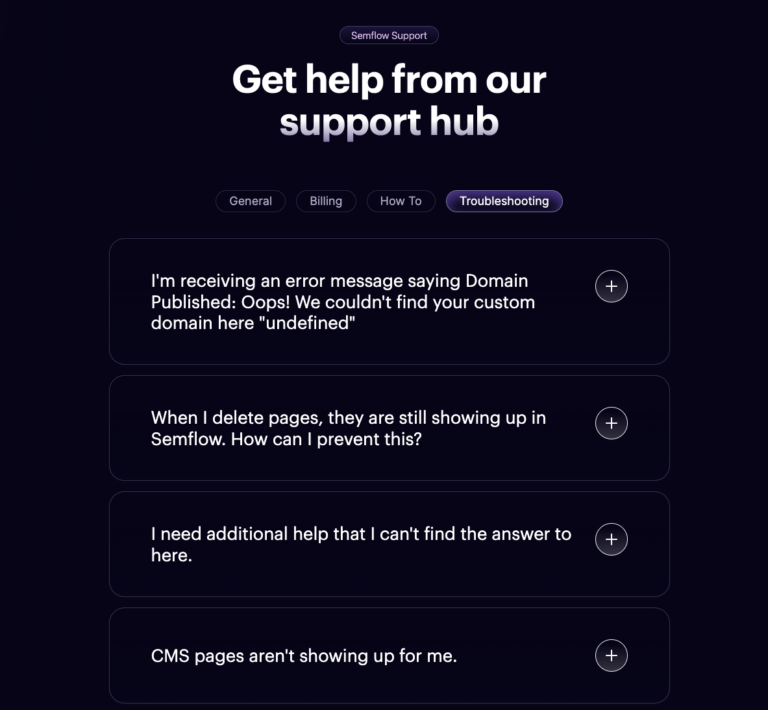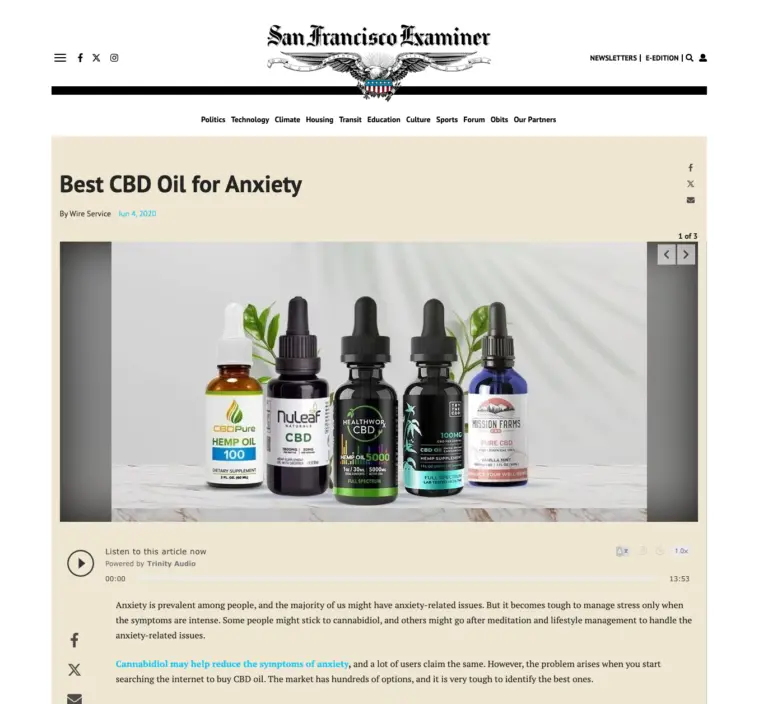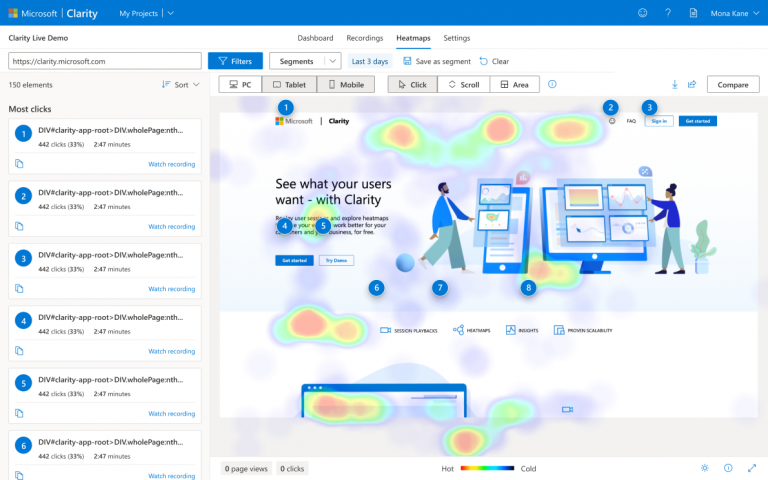Webflow has become an essential tool for designers aiming to create responsive, visually appealing websites without extensive coding knowledge.
Semflow is a plugin designed to complement Webflow by improving search engine optimisation (SEO) capabilities for websites created with this platform.
You might find that the addition of Semflow addresses essential SEO needs without disrupting the design process, allowing you to maintain aesthetic integrity while optimising your site for search engines.
When you integrate Semflow into your Webflow project, you’re able to manage meta tags, alt-text for images, and other key SEO elements directly within the
Webflow interface. This seamless experience can save you time and effort, particularly if you’re looking to optimise each page of your website for better search results.
Semflow claims to offer a user-friendly approach to a typically complex aspect of website management, with the intention of making SEO more accessible to designers and content creators alike.
Overview of Semflow
Semflow offers a new approach to enhancing your website’s effectiveness within Webflow. Here, we will explore what Semflow is and its key features.
What is Semflow?
Semflow is a third-party integration designed specifically for Webflow users. This tool facilitates search engine marketing efforts by providing a suite of utilities geared towards optimising your Webflow hosted webpages for search engines.
It aims to streamline the process of improving search visibility and tracking web performance within the Webflow ecosystem.
Key Features
- Keyword Analysis: With Semflow, you have the ability to conduct comprehensive keyword research and analysis, offering insights that can inform content strategies.
- SEO Audits: The software routinely performs SEO audits of your Webflow site, highlighting potential issues and offering actionable recommendations to enhance your site’s search engine performance.
- Content Optimisation: Tools are available to guide you in optimising page titles, meta descriptions, headings, and images, ensuring that all content contributes positively to your site’s overall search engine ranking.
- Performance Tracking: Semflow provides detailed reporting on various metrics such as keyword rankings, backlink profiles, and competitor analysis, helping you to monitor your site’s performance and make data-driven decisions.

Setting Up Semflow with Webflow
When configuring Semflow for your Webflow project, it’s important that each step is followed with careful attention to ensure proper integration and functionality.
Initial Configuration
To start using Semflow with Webflow, you need to create a Semflow account. Visit the Semflow website and sign up for a new account, selecting the appropriate plan for your needs.
Once registered, navigate to your account dashboard where you’ll find the key configurations. In this area, focus on establishing your project parameters, such as defining your target keywords and setting up your SEO goals.
- Sign up for Semflow account
- Choose plan
- Set project parameters
- Define target keywords
- Establish SEO goals
Integration Process
Integrating Semflow with your Webflow site involves connecting the two platforms to synchronise SEO data and workflows. Begin by locating the Semflow integration code from your Semflow dashboard. Copy the code provided.
Next, in your Webflow project, go to your site settings and find the ‘Custom Code’ section. Here, paste the Semflow integration code into the ‘Head’ of your site as instructed.
This will link your website to Semflow and start the data synchronisation process. Save changes and publish your site for the changes to take effect.
- Copy Semflow integration code
- In Webflow:
- Go to site settings
- Access ‘Custom Code’ section
- Paste code in the ‘Head’
- Save and publish site
Once this process is completed, Semflow and Webflow will work together, allowing you to optimise your site’s SEO performance directly from the Semflow dashboard.
User Experience Design
When evaluating Semflow for Webflow, it’s vital to consider its impact on user experience design, focusing on how it enhances interface navigation and provides customisation options that cater to your specific needs.
Interface Navigation
Semflow offers a user-friendly interface that simplifies the process of designing and managing websites. You’ll find that navigating through the various design elements and settings is intuitive, with a logical layout that reduces the learning curve for new users.
Major features are well-labelled, and there’s a coherent flow that guides you from one task to the next. Additionally, helpful tooltips provide on-the-spot guidance to ensure you can move around the interface with ease.
- Intuitive Menus: Clearly defined categories in dropdown menus.
- Responsive Design: Seamless adaptation to different device screens.
Customisation Options
The platform stands out for its comprehensive customisation capabilities. You can tailor the appearance and functionality of your site with a range of tools and widgets that are both flexible and powerful.
Customising your site is as simple as selecting from pre-designed templates or building from scratch for more personalised needs.
- Templates: A selection of professionally designed templates.
- Widgets: Diverse widgets that can be integrated and configured.
Workflow Optimisation
Efficient workflow optimisation is key in Webflow’s Semflow tool, enabling you to streamline project management and enhance team cooperation effectively.
Automation Capabilities
Semflow offers a suite of tools to automate repetitive tasks within Webflow, effectively reducing manual intervention. For example, automated page testing ensures that all web elements function correctly before going live.
Additionally, the software can auto-generate clean code for animation effects, which decreases the time spent on coding.
- Task Automation: Auto-assigns tasks to team members based on predefined conditions.
- Code Generation: Efficient CSS and HTML generation for faster site development.
- Testing Tools: Execute automated tests for functionality, usability, and performance.
Collaborative Features
To facilitate real-time collaboration, Semflow incorporates tools that are accessible by multiple team members simultaneously.
- Live Editing: Enables multiple users to edit designs concurrently.
- Commenting System: Inline commenting allows for immediate feedback on design elements.
- Version Control: Keeps track of changes and allows reverting to earlier versions if necessary.
These features are designed to ensure that your web design process is as smooth and productive as possible, giving you the control and flexibility to create at scale without compromising on quality.
Semflow Performance
In assessing Semflow’s performance, two critical aspects stand out: its speed and uptime, as well as its scalability. These factors are vital for ensuring a smooth and efficient experience for website owners and visitors alike.
Speed and Uptime
Speed: Tests indicate that websites hosted on Semflow load exceptionally swiftly. Metrics such as time to first byte (TTFB) and full page load times consistently outperform industry standards.
Uptime: Semflow commits to a 99.9% uptime service level agreement (SLA), which is backed up by historical uptime data. Downtime is minimal and mostly scheduled during off-peak hours for maintenance.
Scalability
Immediate Scaling: Your website can scale resources on demand to accommodate traffic spikes without manual intervention.
Long-term Growth: Semflow’s infrastructure supports sustained growth, ensuring your website’s performance remains stable as your traffic increases over time.
Pricing and Plans
Semfloas has one price plan which is $15 per month and includes a 7 day FREE trial! If you pay annually its will only cost you $8 per month.

Cost-Benefit Analysis
When evaluating each subscription tier’s cost against the benefits provided, consider several key factors such as:
- Project and Keyword Requirements: Larger project needs justify higher-tier plans.
- Tool Complexity: Advanced tools may result in better SEM performance.
- Support Level: More immediate and comprehensive support can optimise your workflow.
Weigh the professional requirements against the additional features and decide which plan will maximise the potential return on your investment.
Customer Support and Resources
Semflow offers a comprehensive suite of customer support options and educational resources designed to optimise your experience with Webflow. These services ensure you can efficiently resolve issues and enhance your skills in using the platform.
Support Services
Ticket System: Submit your queries through Semflow’s ticketing system to receive assistance. Assistance is available Monday to Friday from 9 am to 5 pm GMT.
Live Chat: Engage with support staff via live chat for real-time help. This feature is operational during business hours, providing prompt resolutions to pressing concerns.

Learning and Development
Tutorials: Access a library of step-by-step tutorials covering various aspects of using Webflow. Content ranges from basic setup to advanced design techniques.
Webinars: Attend live webinars hosted by Semflow experts, offering deep dives into specific features and best practices for Webflow design and development.
Semflow Pros and Cons
When choosing Semflow for your Webflow projects, consider the following advantages and limitations.
Advantages
- Flexible Integration: Semflow offers seamless integration with Webflow, allowing you to manage your search engine marketing (SEM) efforts directly within your website’s design environment.
- User-friendly Interface: The platform boasts an intuitive interface, making it accessible even to those without in-depth SEO knowledge.
- Detailed Analytics: Comprehensive reporting tools provide valuable insights into your campaigns, enabling you to make data-driven decisions.
Limitations
- Cost: The subscription may be a significant expense, especially for smaller businesses or individual users.
- Learning Curve: Despite its user-friendly design, initially, some users may find the array of features overwhelming and require time to become proficient.
Conclusion
In summarising Semflow’s integration with Webflow, your experience in website creation is poised to be more intuitive and effective.
Semflow stands out for its user-friendly interface, allowing you to manage search engine marketing seamlessly within Webflow’s design-first environment.
Key benefits include:
- Efficiency: By implementing Semflow, the time-saving aspect is clear. You can optimise your site for search engines without leaving Webflow.
- Control: Gain the ability to tweak SEO parameters easily, which is integral for maintaining an online edge.
- Synchronisation: Your design and marketing efforts are more aligned, ensuring that both aspects complement each other well.
Bear in mind:
- Learning curve: New users might need to spend time getting accustomed to the features offered by Semflow.
- Investment: While Semflow adds value, evaluate your budgetary constraints before integration.
Ultimately, Semflow’s features enhance your Webflow experience, ensuring your website isn’t just aesthetic but also competitive in search engine rankings. As with any tool, its true value will be reflected in the growth and performance of your online presence.






